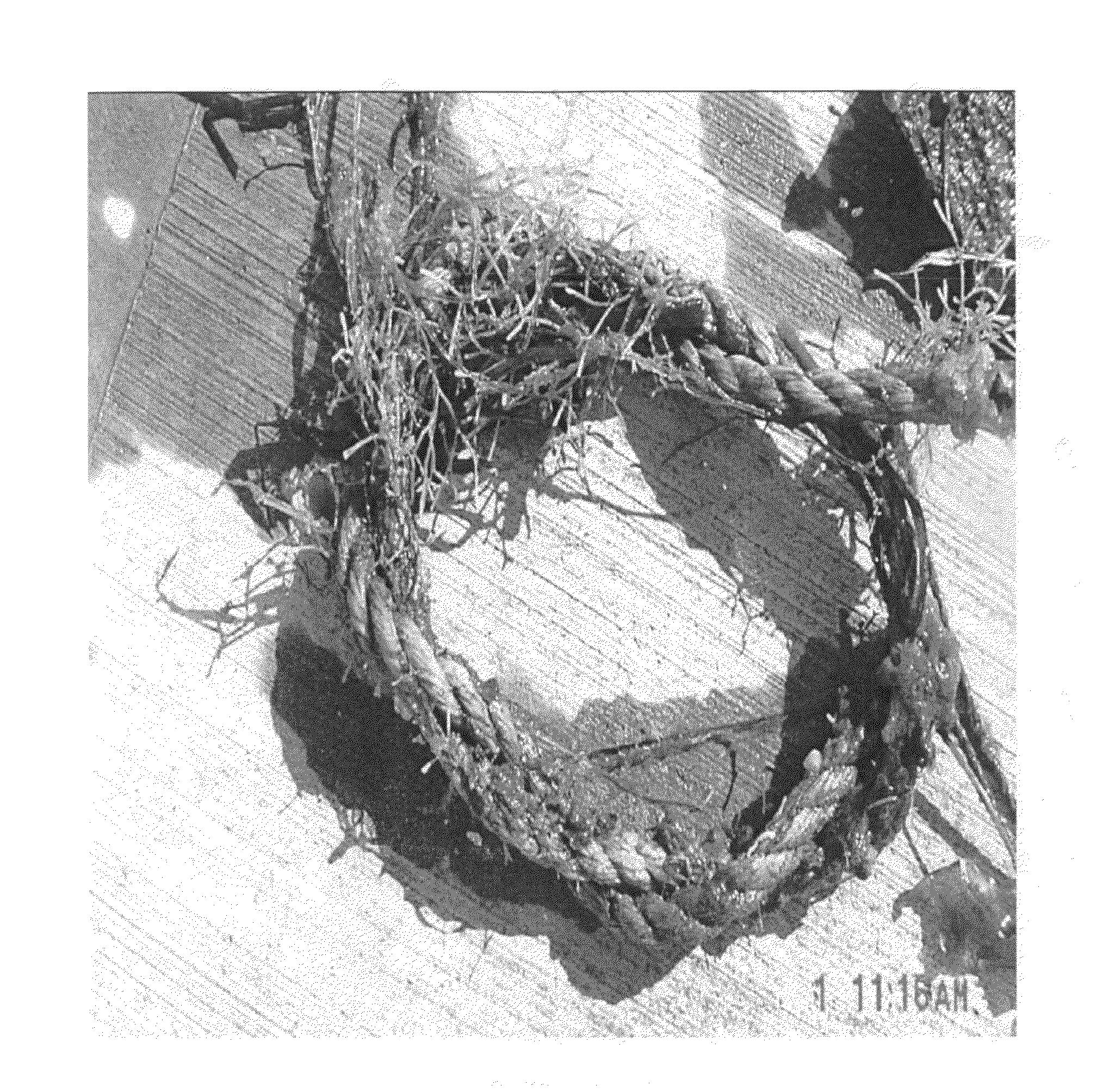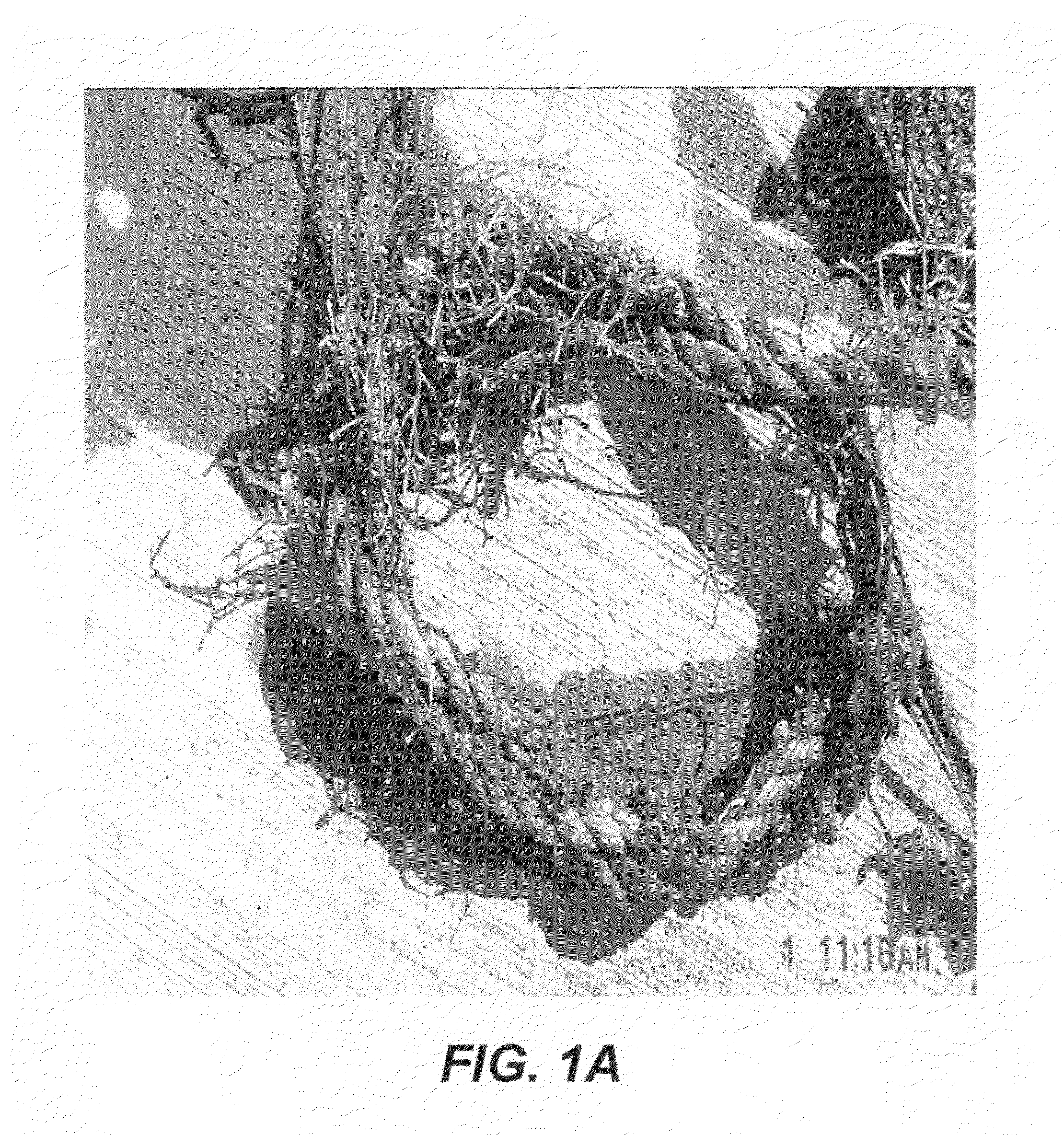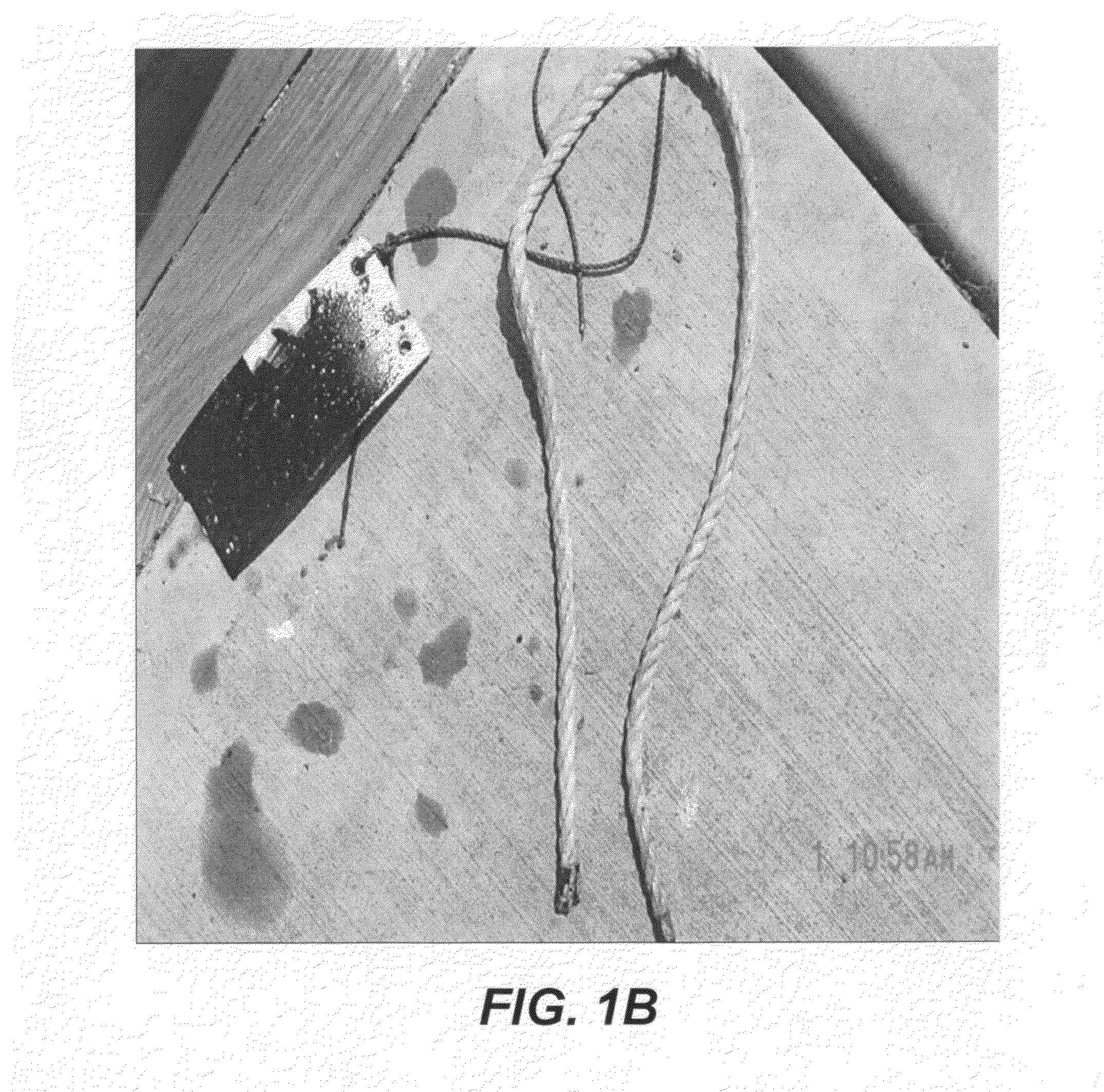Polymer coatings containing phytochemical agents and methods for making and using same
a technology of phytochemical agents and polymer coatings, which is applied in the directions of biocide, plant/algae/fungi/lichens ingredients, drug compositions, etc., can solve the problems of reducing the performance of the hull of the ship through the water, significant economic penalties, and high cost to the shipping industry, etc., and achieves the effect of preventing or inhibiting the colonization of the treated surfa
- Summary
- Abstract
- Description
- Claims
- Application Information
AI Technical Summary
Benefits of technology
Problems solved by technology
Method used
Image
Examples
example 1
[0172]
TABLE 3Polymer Base No. 1-(No water; No Acrysol)PercentPercentDryDry WeightaWetWet WeightbWeight(gm / 100 gmweight(gm / 100 gmCOMPONENT(gm)solid)(gm)solution)CoatOsil 12110.804.30.802.2Silwet L-770.301.60.300.85Novacryl DP-1263.1016.65.1314.6(60.3% solid)Acrygen 866212.3866.527.5285.6(45% solid)Ancamine K-540.341.80.340.97CoatOsil 17701.055.61.053.0TOTAL17.9738.76aPercent Dry Weight calculated before adding waterbPercent Wet Weight calculated after adding water
example 2
[0173]
TABLE 4Polymer Base No. 2-(Water; No Acrysol)PercentPercentDryDry WeightaWetWet WeightbWeight(gm / 100 gmweight(gm / 100 gmCOMPONENT(gm)solid)(gm)solution)Deionized Water95.1873.00CoatOsil 12110.804.30.800.61Silwet L-770.301.60.300.23Novacryl DP-1263.1016.65.133.94(60.3% solid)Acrygen 866212.3866.527.5221.12(45% solid)Ancamine K-540.341.80.340.26CoatOsil 17701.055.61.050.81TOTAL17.97130.32
example 3
[0174]
TABLE 5Polymer Base No. 3-(No Water; Acrysol)PercentPercentDryDry WeightaWetWet WeightbWeight(gm / 100 gmweight(gm / 100 gmCOMPONENT(gm)solid)(gm)solution)Acrysol RM-8250.743.112.647.0(28% soild)CoatOsil 12110.802.690.802.11Silwet L-770.301.260.300.8Novacryl DP-1263.1013.055.1313.6(60.3% solid)Acrygen 866212.3852.1127.5272.84Ancamine K-540.341.430.340.9CoatOsil 17701.054.421.052.78TOTAL18.6337.78
[0175]The thickness protective colloid (Acrysol RM-825) is added for increased stability and longer shelf life of the liquid mixture. RM-825 is a polyurethane based thickener.
PUM
 Login to View More
Login to View More Abstract
Description
Claims
Application Information
 Login to View More
Login to View More - R&D
- Intellectual Property
- Life Sciences
- Materials
- Tech Scout
- Unparalleled Data Quality
- Higher Quality Content
- 60% Fewer Hallucinations
Browse by: Latest US Patents, China's latest patents, Technical Efficacy Thesaurus, Application Domain, Technology Topic, Popular Technical Reports.
© 2025 PatSnap. All rights reserved.Legal|Privacy policy|Modern Slavery Act Transparency Statement|Sitemap|About US| Contact US: help@patsnap.com



